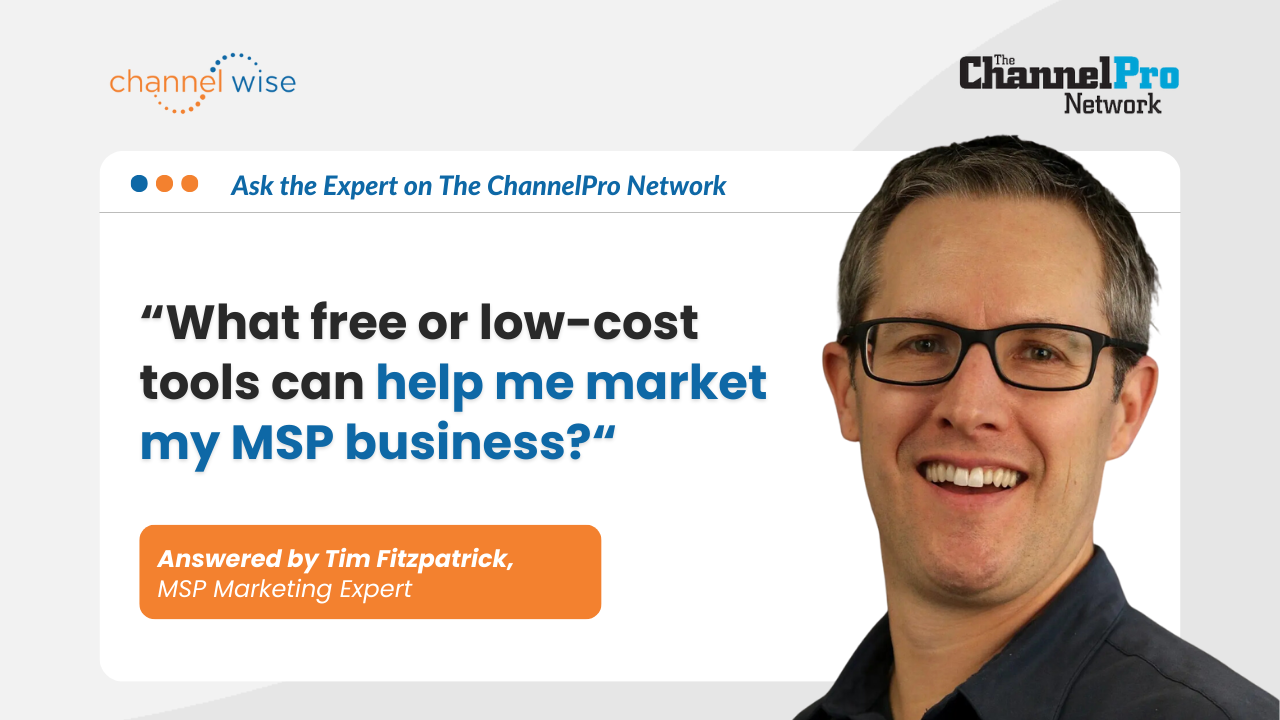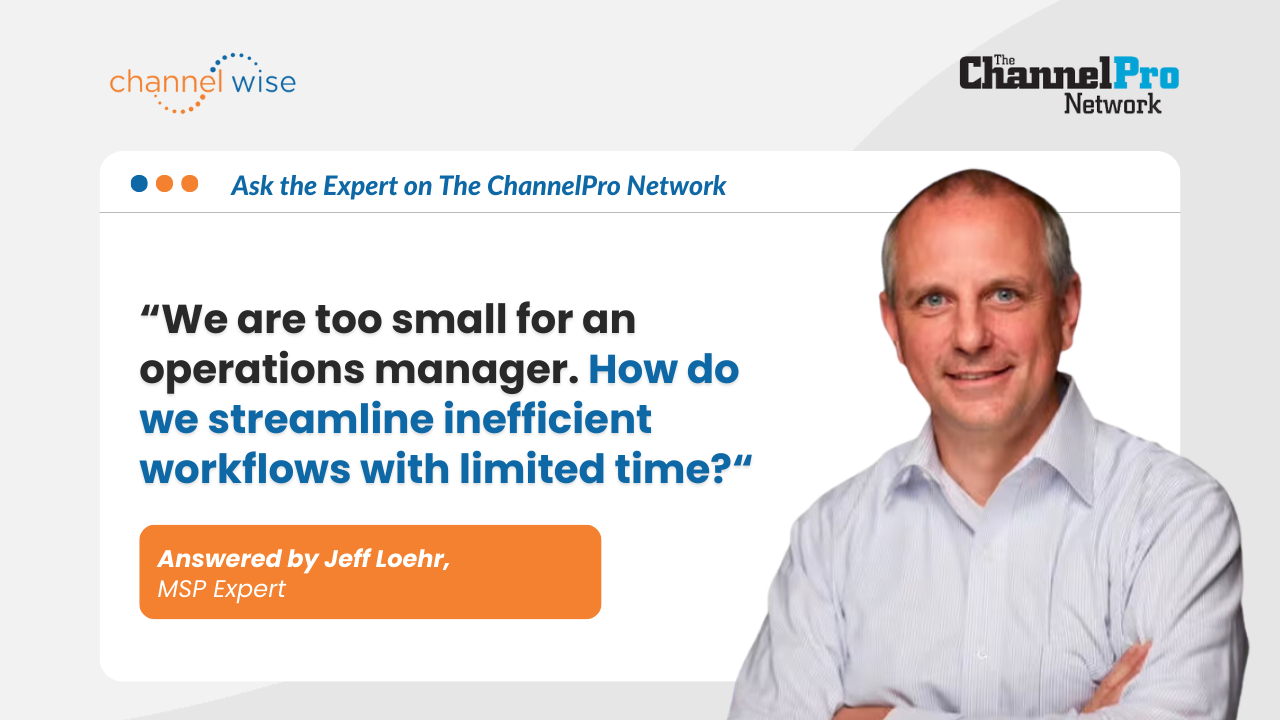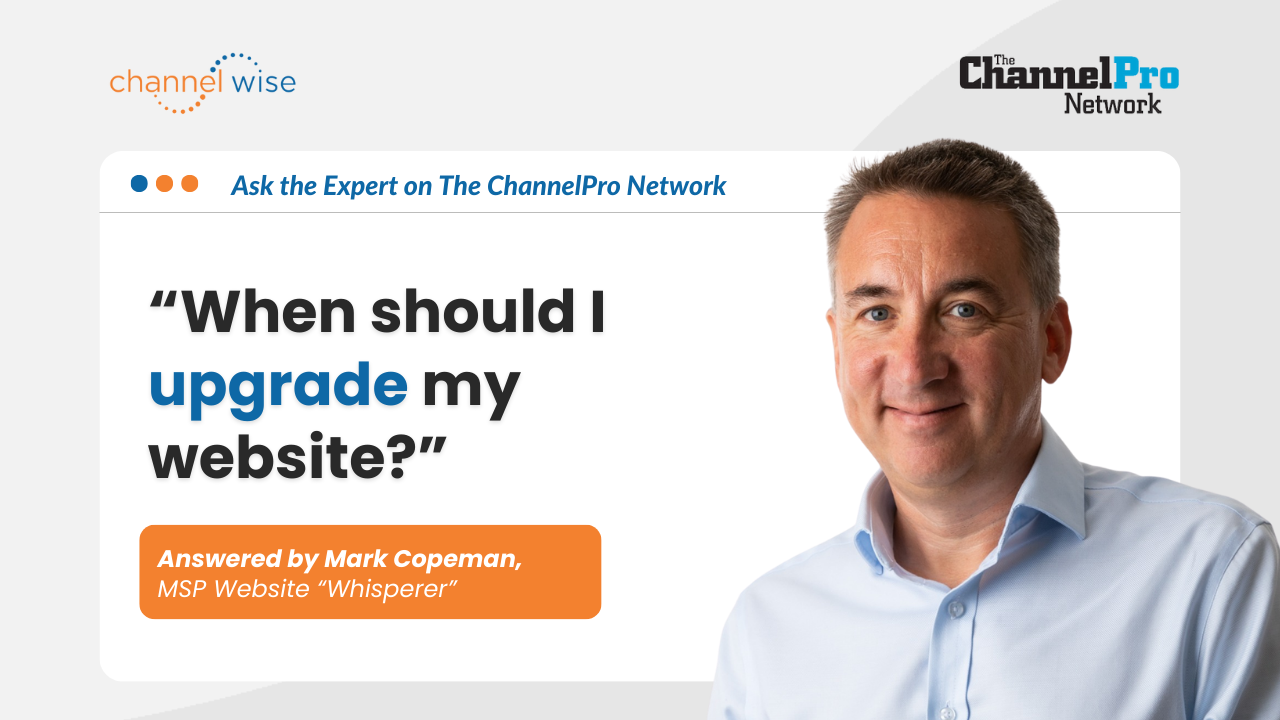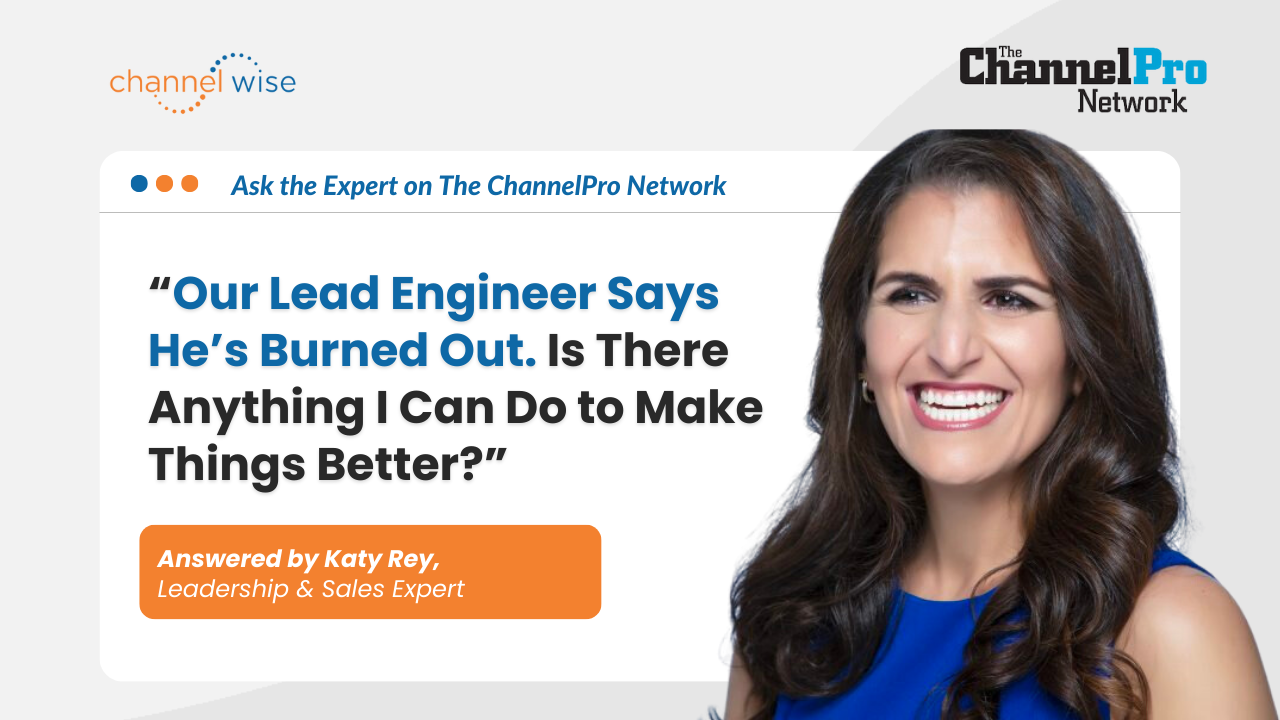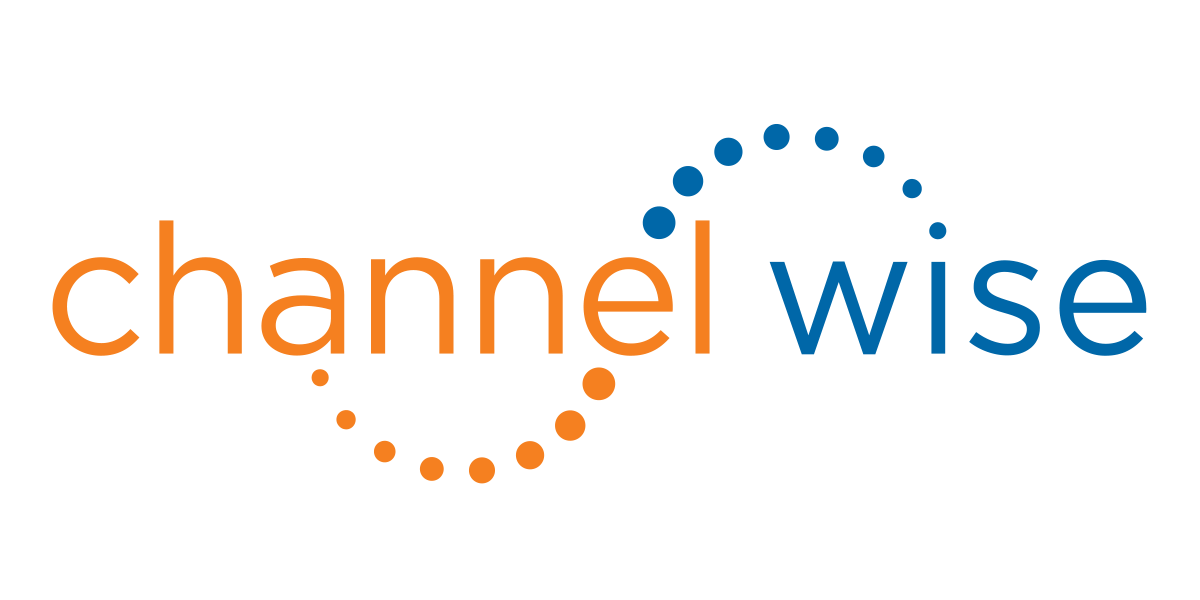Collaboration in the Channel Ecosystem with Frank Raimondi
Click here to watch the replay:
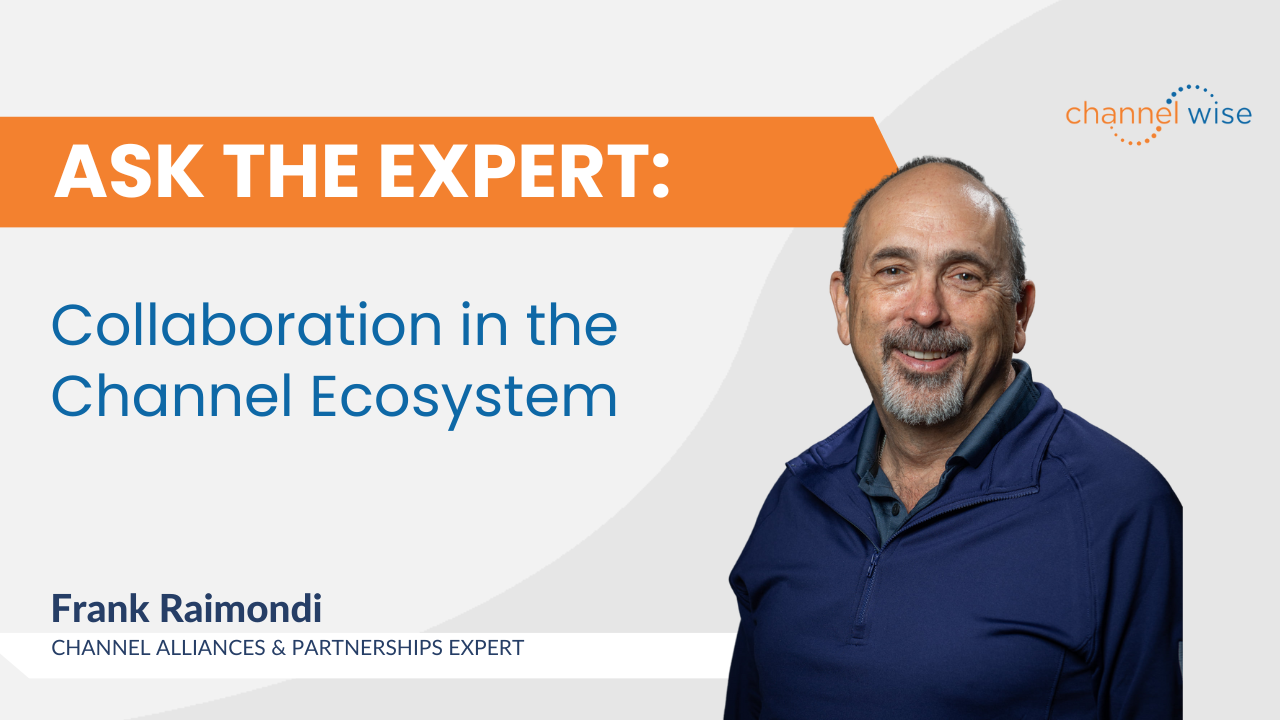
The success of any channel program depends on how well vendors understand their partners' needs and work collaboratively to provide solutions that work seamlessly.
In this Ask the Expert episode, Kathryn Rose, CEO & Founder of channelWise, sits down with Frank Raimondi, a channelWise expert and VP of IGI Channel Alliances & Partnerships, to discuss the importance of collaboration in the channel ecosystem.
Highlights
- The evolution of channel programs has shifted towards developing programs that match partners' needs rather than just the vendors'.
- Providing a frictionless environment for partners to find and support products or services is crucial.
- Collaborating and sharing knowledge and resources in the channel ecosystem benefits everyone involved, including partners and end-users.
How have channel programs evolved over the years?
In the past, the focus was primarily on getting partners in, but there has been a shift toward developing programs that match the partners' needs. Although there is still a selfish motive for vendors to incentivize big partners, there is a better understanding of partners' businesses, and vendors develop programs tailored to their needs.
I have seen examples such as Intel, where siloed programs were brought under one umbrella to create a program that targeted the partner's needs. There has been a continuous change towards focusing on tools, expertise, and training best suited for the partner's business. The evolution of channel programs has been ongoing, and there is a growing trend of developing programs that match the partner's needs rather than just the vendor's needs.
How has the increasing number of vendors and technologies affected partner programs?
The overwhelming number of options can make it challenging for partners to keep up, especially in cybersecurity. While partner programs are still relevant, partners primarily focus on finding affordable products that deliver value to their customers. The role of a partner program is to supplement these needs rather than dictate them.
As I have seen, partners want to try a lot of cool new technology, but the evaluation process is becoming increasingly difficult. Vendor fatigue is common, and partners often struggle to understand the benefits of new technologies. Therefore, vendors and suppliers must focus on their partners' needs and tailor their programs accordingly. Instead of forcing partners to go to market with them, vendors should ensure they provide partners with what they need when they need it.
What is your advice for channel marketers launching a channel program at a cybersecurity company?
Social media is still a standard approach, but the emphasis should be on face-to-face presence and consistency. There is no easy answer as it depends on the category and ideal customer. To approach this issue, it is essential to identify the end-user persona and take it back to one level to determine where they get their information, advice, and purchases.
It is crucial to align with partners and understand where they get their products and information from. Many vendors have excellent technology, so it is essential to differentiate oneself and ensure the partner program aligns with the partner's needs. It is important to follow the steps back from the product's ultimate end-user and understand how to reach them effectively.
By taking these steps, a cybersecurity company can create a successful channel program that aligns with partners' needs and ultimately drives revenue.
What are some key considerations for communicating with partners?
Providing a frictionless environment for partners to find and support products or services is crucial. To achieve this, use various means such as a YouTube channel, event shows, and partner portals. However, avoid being obnoxious and understand what the end-user is looking for and where they are.
We can also adopt a program like kickpost.io, which combines social media and partner information to provide a community of channel partners. By providing a frictionless environment, we can build strong relationships with our partners and effectively support them. It is essential to make it easy for partners to find us, communicate with us, and get the support they need to promote and sell our products or services successfully.
What is the importance of face-to-face events in channel marketing, and how can they be revived after budget cuts?
As a cybersecurity consultant, events are still a very practical way to connect with partners, especially in-person events where we can establish a personal relationship. While virtual events have some value, face-to-face interactions are still important. Actually, my organization is doing a combination of big and small shows this year, depending on the audience and the value they bring to our business.
Why did you decide to support channelWise?
I believe in the value they offer to small MSPs who don't have access to marketing staff or experts in areas such as SEO and social media. As a founding advisory board member, their on-demand expert advice platform is an affordable and convenient solution for partners who need a few hours of an expert’s time. Also, channelWise’s range of experts is extensive and valuable for all types of partners.
How important is it for vendors to understand their partner's and end users' challenges?
It is crucial for vendors to understand the challenges faced by their partners and end users, even if they do not directly offer solutions for those challenges. Vendors must know their position in the ecosystem and work with other partners to provide comprehensive solutions. Partnerships are a great way to achieve this, and vendors should be open to trying different partnerships that make sense and provide value to all parties involved. Additionally, vendors should be honest about any limitations or redundancies in their solutions and work to support their partners in providing the best possible solutions to end users.
What are some tips for vendors when looking for alliance partners?
As a vendor, you must know your strengths and weaknesses and where your core competency lies. Look beyond what your product needs to work with and consider what would be the next best thing if you were to acquire or be acquired by another company. You have to consider it a starting point, as you may not want to merge, but a partnership can lead to a merger. You must consider what the end user or partner wants and help them find those pieces. When developing an alliance strategy, think about what you are starting with and the next stage if you could develop it yourself. Look for someone in that space or close to it if you don't want to do it yourself.
How important is it for vendors to work together in the channel ecosystem?
It is crucial for vendors to work together in the channel ecosystem to provide a better experience for partners. When vendors collaborate and share their knowledge and resources, it becomes easier for partners to find solutions that work together seamlessly, which helps them to serve their customers more efficiently.
In addition, channelWise provides a platform for partners to access the expertise they need when they need it, making it easier for them to brainstorm and collaborate with others. Ultimately, working together benefits everyone involved, and vendors need to consider this when looking for alliance partners.
For more advice about channel development, visit Frank’s profile on channelWise.
Check out channelWise.com for more experts to help you with your business or career.
Note: Transcript is edited for time and clarity. Originally published on LinkedIn.
